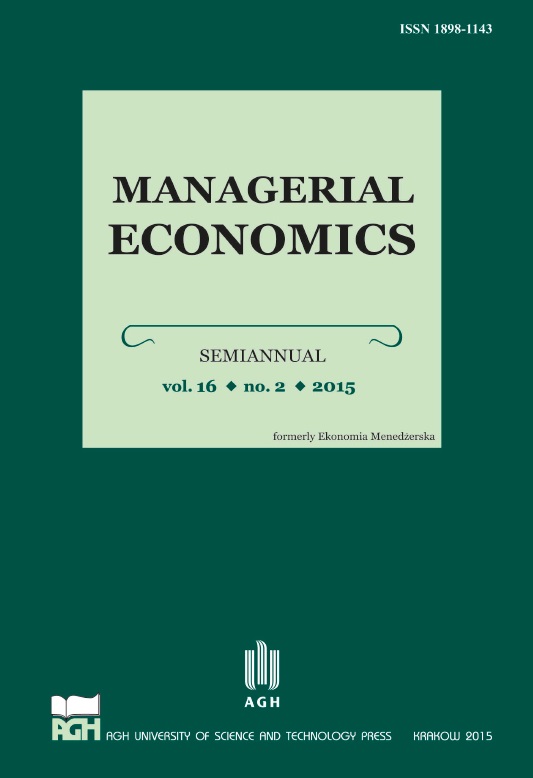Fragmentation and the value-added structure of exports in Polish industry
DOI:
https://doi.org/10.7494/manage.2015.16.2.149Abstract
The accession to the European Union contributed to an increase in Poland’s foreign trade, and the growing export market is coupled with an increasing importance of intermediate imports, which is necessary to produce goods of appropriate quality and price. This phenomenon is a part of the process of fragmentation in global value chains. Fragmentation of the value chains should manifest themselves, in particular, in a multi-phase manufacturing process that requires many components of different types. In this paper, the recently available OECD database of the Trade in Value Added (TiVA) has been used to assess changes in the composition of gross exports of Poland and other Central Europe countries. In Poland, practically all sectors show a growing share of the imported value added. The cases analyzed confirm the thesis that the high technology sectors foster fragmentation. In the case of technologically less advanced sectors and short-value chains, benefits of fragmentation are limited. The progressing fragmentation and, as a consequence, a growing share of the imported value added made the gross export value (which is commonly used in statistics) of little use for the analysis of the economic role and competitive position of sectors. However, thanks to new projects based on I-O matrices of the global economy, it is possible to decompose gross exports into respective domestic and foreign value-added streams.Downloads
Download data is not yet available.
Downloads
Published
2016-02-13
Issue
Section
Articles
License
Download, sign, scan and attach copyright statement form.
How to Cite
Posłuszny, K. (2016). Fragmentation and the value-added structure of exports in Polish industry. Managerial Economics, 16(2), 149. https://doi.org/10.7494/manage.2015.16.2.149

